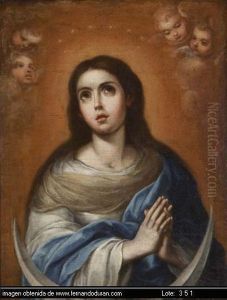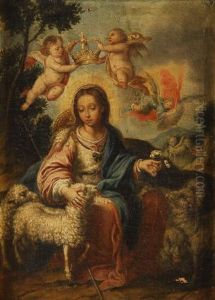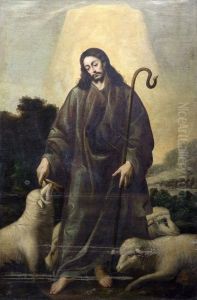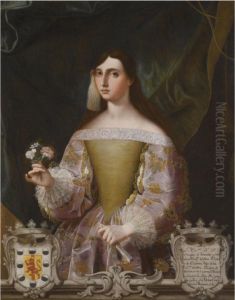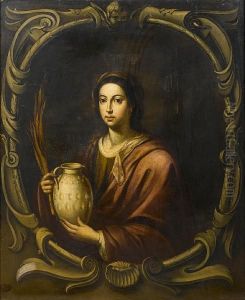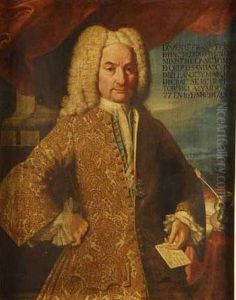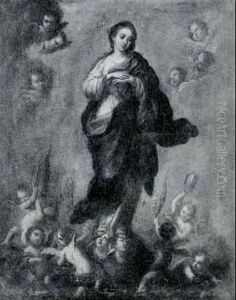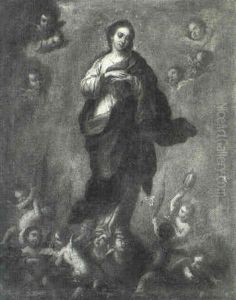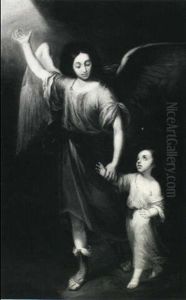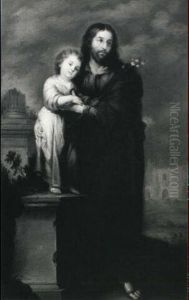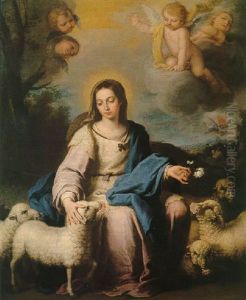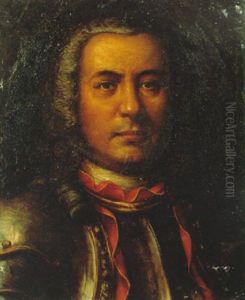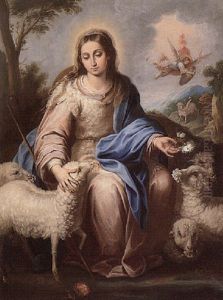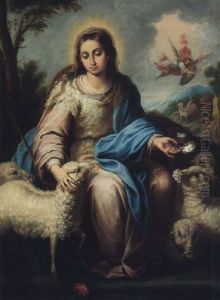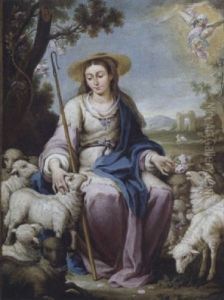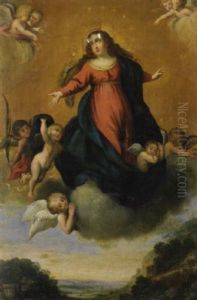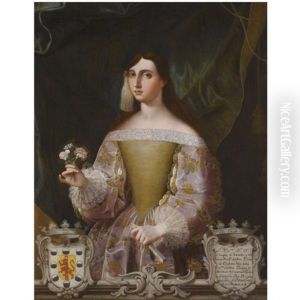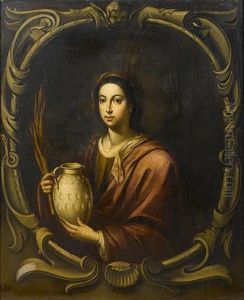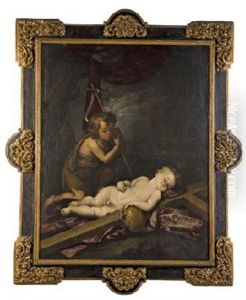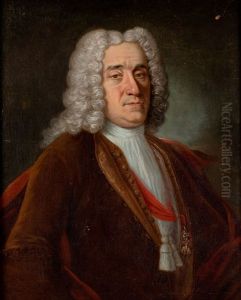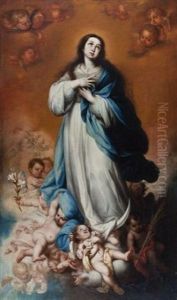Miguel Alonso De Tovar Paintings
Miguel Alonso de Tovar was a Spanish painter born in Sevilla (Seville) in 1678. His precise birth date is not documented, but he was baptized on April 11, 1678. De Tovar is best recognized for his religious-themed paintings, which reflect the Baroque style that was prevalent during his time. He is considered one of the important figures of the Sevillian school of painting, which produced notable artists like Murillo and Valdés Leal.
De Tovar began his artistic training under the tutelage of his uncle, Juan de Alfaro y Gamez, who had himself trained in the workshop of the famous Diego Velázquez. Through his uncle's guidance, Tovar was exposed to the currents of Spanish Baroque and developed a strong foundation in the techniques of painting. His style was characterized by a strong sense of naturalism and an ability to convey deep religious sentiment through his work.
Over his career, de Tovar produced a significant body of work, much of which was commissioned by religious institutions within Sevilla. His paintings were primarily focused on the lives of saints and other biblical narratives. Among his notable works are 'San Francisco Javier' and 'La Inmaculada Concepción', which showcase his skill in portraying religious figures with a sense of dignity and emotional depth. His works were known for their refined use of light and shadow, a characteristic of the Baroque style, which helped to emphasize the spiritual elements of the subjects.
De Tovar's success as a painter was not limited to his artistic skill. He was also adept at navigating the complex network of patronage that characterized the art world of his time. He garnered the support of influential figures in the church and aristocracy, which ensured a steady stream of commissions and financial stability.
Miguel Alonso de Tovar remained active in Sevilla until his death in 1758. Although he may not be as widely known as some of his contemporaries, his work has been appreciated for its contribution to the Spanish Baroque movement. His paintings can be found in various churches in Sevilla and in art collections that focus on this period of Spanish art. The legacy of de Tovar continues to be studied by art historians who recognize his role in the development of Sevillian painting during the Baroque era.
